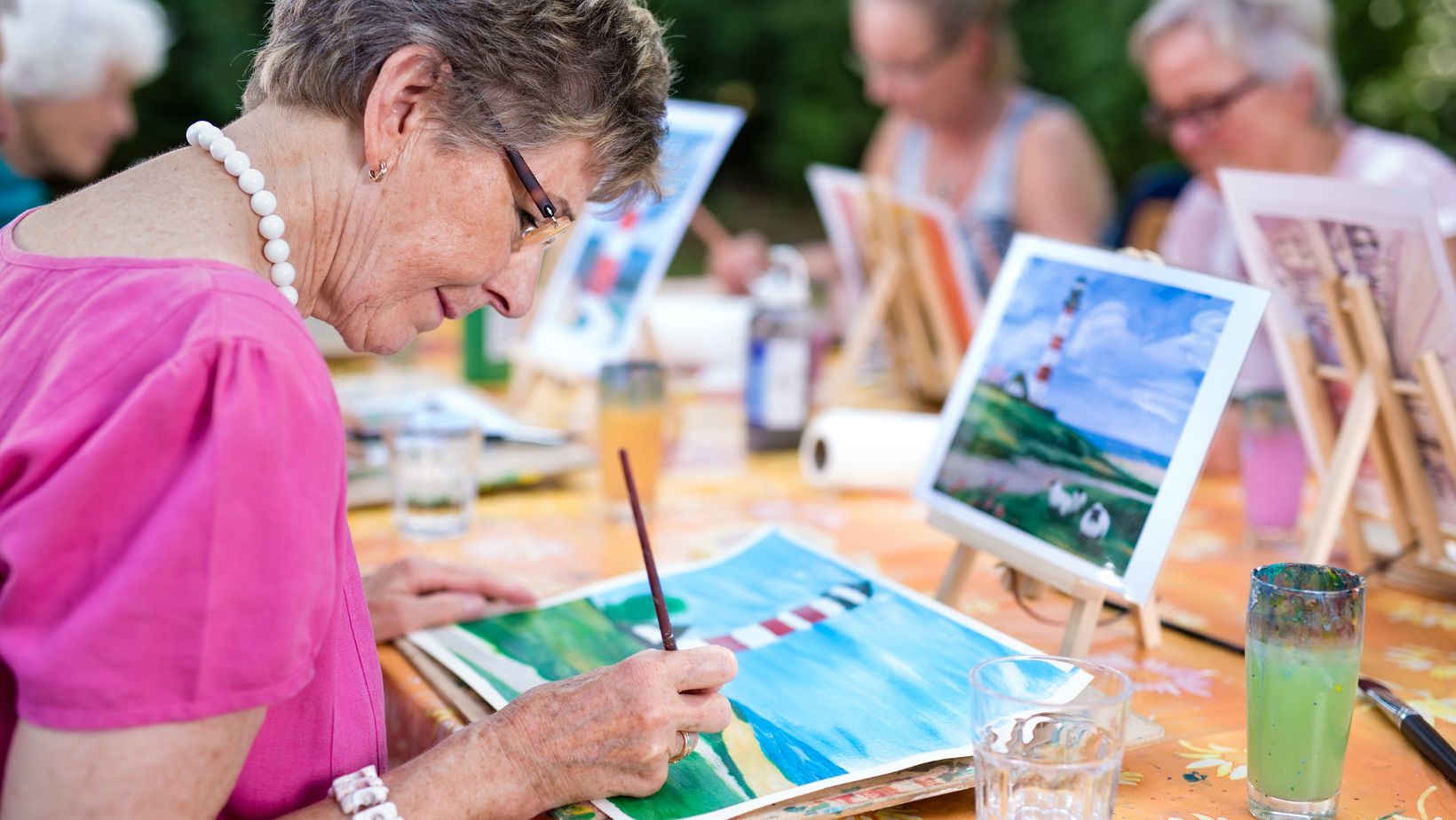Stress is an ongoing problem for many people in today’s hectic world. We have stress at home, on the job, and on the road – essentially, stress can happen anywhere and anytime. While many different coping methods exist for handling stress, one thing that can help is art therapy.
Whether you are dealing with physical or mental issues associated with stress and anxiety, art therapy can help you relax, unwind, and feel better.
What is Art Therapy?
Art therapy is a natural method of combatting everyday stress, allowing you to be creative, have fun, and focus on something other than your stressors. Although art therapy began in the 1940s, it became popular in the 1970s.
Art therapists use art as a tool to help people express, interpret, and resolve issues, thoughts, conflicts, and emotions. Providing a different way to look at your issues or what is causing distress can help you respond to your emotions with a new perspective. Self-expression is a powerful way to support your mental health.
A licensed art therapist can help you deal with past trauma, current issues, and troubling situations.
How Does Art Therapy Help?
Art therapists work with individuals to better understand their stressors or challenging situations. They guide their clients to create art that addresses the underlying issue. Art therapy can help people identify an issue, develop effective coping strategies and skills, and overcome inhibiting stressors.
An art therapy Session Often Consists of the Following:
⮚ Describing the expected goal of the session
⮚ Understanding that you do not have to be artistic to be creative and benefit your mental well-being
⮚ Selecting an appropriate medium to apply to the situation in question
⮚ Guidance throughout the artistic process
⮚ Discussion of the creative process, how it felt, what was accomplished
Following an art therapy session, a person can decide whether to continue on their own, create art at home as a therapeutic process, or schedule another guided session. Luckily, most people can do art independently, as no one ever needs to see your creations if you prefer.
Utilizing art therapy can help someone relax to a point where they can look at their stressors in a different light, getting in touch with their emotions. Art therapy can be done without talking, allowing a person to work quietly through their issues. It is an excellent tool for children who may be too young or unable to verbally communicate their emotions and feelings.
Here Are Some Ways Art Therapy Can Help:
● Reduce Stress Levels
Creative arts allow people to relieve their minds from focusing on a stressful situation for a short time. They can de-stress, relax, and tap into the creative flow by slowing down and removing pressure.
● Boost or Decrease Your Appetite and Normalize Sleep Patterns
Stress can cause some people to go without eating while others overeat. Sleep may become elusive as stress keeps you up at night. Art therapy helps normalize eating and sleeping by identifying and dealing with one’s stressors.
● Boost Mindfulness
Fostering self-awareness is a significant aspect of art therapy, helping you tune into your thoughts, emotions, and physical being.
● Helps Processing and Understanding of Emotions
Identifying the root cause of a situation is the first step. Art therapy helps people focus on feelings that can lead to identifying the cause of their issues, processing them, understanding the attached emotions, and learning coping techniques to deal with them.
● Help You to Distract From Thoughts and Interrupt Anxiety
Our life is full of responsibilities, stressors, and anxiety about them. Often, such emotional states can worsen due to hormonal problems, such as HGH deficiency. Discover how to buy HGH injections online and how to treat your hormonal imbalance.
● Mental Engagement and Focus

Allowing the mind to focus on something other than a problem causing stress helps you focus. Art therapy helps the mind focus elsewhere. When you can think more clearly, solutions are more likely to come to light.
● Provides an Emotional Release
Relieving stress by processing your feelings can help you let go and experience a crucial emotional release. Once an emotional weight has been relieved, people are free to move forward with their lives.
● Increases Dopamine
Creating art positively impacts the brain, increasing dopamine, a powerful neurotransmitter that decreases in times of stress, anxiety, and depression. By increasing dopamine levels naturally, people feel happier and have less stress and depression.
What Art Therapy Can You Try?
Art therapy provides many areas of creative expression, some of which require specific tools, such as sculpting or textile work, while others need only paper and a pencil, such as sketching.
You can turn to an art therapist for help with significant stressors and mental health issues or engage in art therapy on your own to help you relax and relieve your mind from the stress of daily life.
Here Are Some Art Therapy Options Worth Trying:
● Clay work, Sculpting, Ceramics
Art therapists use these methods to help people practice mindfulness by focusing the mind on a more intimate and detailed art form. These tactile art forms provide a dimensional view that helps people realize there are different dimensions to their situations and points of view. Clay, paper mâché, ceramics, carving tools, and decorative items can help formulate a sculpture.
● Fabrics
While this may not be the first art form to come to mind, working with fabrics, such as sewing or tie-dying, can provide a great creative outlet, allowing one to wear their creation. Other textile art forms include knitting, crocheting, latch hook, and weaving. Textiles also add a sensory later to the therapy.
● Coloring Books
The coloring book phenomenon took the world by storm, allowing people to select a book of images that speak to them. Using colors that are calming to the individual allows for at-home expression and relaxation. Coloring helps the brain slow down to relieve nervousness and stress.
● Drawing and Painting
Drawing can be as simple as sketching with a pencil on paper or working with charcoal, pens, or crayons to create an image. In some instances, drawing what is bothering a person can help them identify the stressor. Painting requires other supplies, such as paints and a canvas. Watercolors, acrylics, and spray paint are some approaches to help construct images.
● Photography
People can use their phones or cameras to take pictures of images that are either pleasurable or stressful. These photos can help get to the source of their problems or create solutions or coping mechanisms.
● Scrapbooking or Collage
Creating an image from scratch may be difficult for some people. Turning to scrapbooking or collage can allow one to utilize magazines and patterned papers to express one’s feelings.
Art journals allow for ongoing expression at home and can be a helpful tool for an art therapist. The individual can sketch or write in them and bring the journal to their sessions to discuss the emotions behind the images.
Conclusion
Art therapy is a powerful tool that can help people come to terms with issues that may be buried deep inside for years. It can help build trust between the therapist and the individual.

Stress reduction is crucial for optimal health and well-being. Turning to art to help relax and unwind can improve sleep, mood, and emotional and physical health. Cortisol (stress hormone) levels decline, allowing other hormones to increase for the benefit of the individual. Studies have shown a significant decrease in cortisol levels after creating art.
Turning to art therapy can relieve stress no matter a person’s age. It can help with expressions of traumatic situations or emotions. Finding an art therapist is beneficial for people dealing with difficult situations that can benefit from creative exploration.


